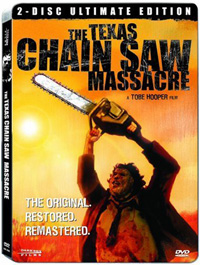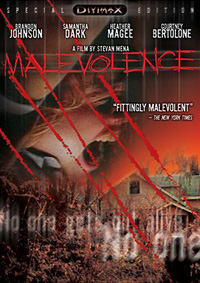Venom
 In terms of B-Movie all-star casts this crazy British flickVenom can’t be beat. All working at their highest ham level, you have the insane German method madman Klaus Kinski (Aguirre: The Wrath of God), and then there’s the American Sterling Hayden who in the fifties was a total stiff playing a lot of tough guys but then reinvented himself in the seventies as an solid character actor (The Godfather). Also on board is the great British actor Oliver Reed (The Devils) who was equally famous for his up and down career as he was for his drunken on-set behavior. Adding some more class to the cast is another terrific British actor Nicol Williamson who, other then his great performance as Merlin in Excalibur, never quite had the career he should’ve had. Rounding out the cast in the female roles, there’s swinging sixties British starlet Sarah Miles (Blow-Up), fashion-model-turned-actress Cornelia Sharpe (Serpico) and the always sexy Susan George (Straw Dogs). For a low budget flick Irwin Allen couldn’t have assembled a cooler line-up.
In terms of B-Movie all-star casts this crazy British flickVenom can’t be beat. All working at their highest ham level, you have the insane German method madman Klaus Kinski (Aguirre: The Wrath of God), and then there’s the American Sterling Hayden who in the fifties was a total stiff playing a lot of tough guys but then reinvented himself in the seventies as an solid character actor (The Godfather). Also on board is the great British actor Oliver Reed (The Devils) who was equally famous for his up and down career as he was for his drunken on-set behavior. Adding some more class to the cast is another terrific British actor Nicol Williamson who, other then his great performance as Merlin in Excalibur, never quite had the career he should’ve had. Rounding out the cast in the female roles, there’s swinging sixties British starlet Sarah Miles (Blow-Up), fashion-model-turned-actress Cornelia Sharpe (Serpico) and the always sexy Susan George (Straw Dogs). For a low budget flick Irwin Allen couldn’t have assembled a cooler line-up.
Director Piers Haggard was fresh off directing Peter Sellers’s final film, a horrible wreck called The Fiendish Plot of Dr. Fu Manchu. He replaced the American director Tobe Hooper (Texas Chainsaw Massacre) who was fired for creative reasons days into filming Venom. What’s ironic is that a few years later Hooper would make one of the craziest British genre mash-ups of all time, the zombie/alien/vampire flick Life Force. In the meantime Venom still stands as another solid genre mash-up; it’s both a kidnapping thriller and a snake-on-the-loose flick, and it does both very well.
A Nightmare on Elm Street 3: The Dream Warriors

My appreciation for the 3rd installment of the Nightmare on Elm Street franchise skyrocketed after watching Christopher Nolan's Inception. Yes, it takes itself less seriously. Hell no, it never received any Oscar buzz. Yes, it's outright cartoonish at times, And, no, you can't convince me I've lost my mind for thinking this (if I'm insane you wouldn't be able to win an argument with me anyway). A Nightmare on Elm Street 3: The Dream Warriors is actually the more sensible, and even more creative film. Re-watching it again recently, I was in awe of its inventiveness with dream logic, and its surreal special effects and production design. It also establishes an idea within two minutes that Nolan completely fails at with 148: that death within a dream has high consequences.
Nightmare 3 ignores whatever happened in Part Two, and so it's not required viewing beforehand (though none of it will make a bit of sense to those who never saw the original Nightmare on Elm Street). The film opens with a teenage artist named Kristen (Patricia Arquette in her first feature-length role). She's mixing coffee grounds with Coke to stay awake, and building a model of a certain creepy house on Elm Street she keeps visiting in her dreams. Soon enough, we're in it with her after she falls asleep, and she's attacked by a razor-gloved, dream-stalking serial killer known as Freddy Krueger. She wakes up in her mother's bathroom holding a razor with slit wrists.
Continue ReadingI Drink Your Blood

First off, let me announce that while this film has boatloads of bloodshed and theme music that warns for danger, I think it is safe to classify it as a cult classic if you wish. The plot is amazing and reflects the vast majority of cult films where just about anything is possible. For instance, in what other genre can you see 50-ft women who trample cities, phobias of every drug imaginable, and alternate fantasies pulled from the minds of those with some of the biggest imaginations? I Drink Your Blood is a movie that would please a cult fanatic more than one of the horror genre, more specifically modern horror. Set in a small town, a group of LSD addicted hippies who belong to a satanic cult have come for a little vacation. At first, their stay is merely criticized by locals until a townsman of old age and his grandson stumble upon one of their bizarre torture rituals and discover that all is not well. When caught, the group holds the boy down and forces the old man to take LSD, causing him to later freak out and ultimately traumatizing his grandson. After witnessing the event, the young boy wanders into the woods and confronts a rabid dog, later to return and shoot the animal in order to collect some of its contaminated blood. The next morning he ventures to the local deli where the only thing on the menu, and thus the only source of food for these mean-spirited hippies, is meat pies. He injects the pies with the rabid blood, unleashing a wave of destruction as the LSD addicted hippie-zombies then blow through the town with a thirst for flesh and a phobia of water.
The only ultra-cheesy aspect of the film is the music that looms in the background when danger is up ahead. In short, it sounds like a collaboration of speedy synthesizers near the point of combustion. The costumes are great, as well as the color contrast, and especially the lighting. The film stock is a bit grainy, which works well for a film from the '70s and adds to the whole drive-in movie effect. The hair…my God, it alone holds the movie up. Never again will you see awesome styles, still lingering from the '60s, equipped with stunning sideburns and overflowing chest hair. The dialog is cheesy, but placed in the right context and certainly one-of-a-kind. I almost wish I could take a trip back to the '70s in order to see if the phrases they used actually existed in everyday speech, or if they only appeared in movies. At every corner there is some sharp object (knife, sword, dagger) or cooler tools like fire, water, and stakes to wage war between the locals and the Satanists, whose number only increases as they contaminate others.
Continue ReadingThe Texas Chainsaw Massacre (1974)
 It turns out that the granddaddy of torture-porn and Slasher-poitation, The Texas Chainsaw Massacre, isn’t as exploitive or graphic as its reputation would make you think. It’s actually just some good old fashioned psychological horror, much closer to the economically controlled thrills of Hitchcock than the splatter flicks of Herschell Gordon Lewis. The film is kinda-sorta based on the misdeeds of serial killer Ed Gain (also an inspiration behind the book Psycho), but perhaps more of a direct result of the graphic violence from the Vietnam War seen nightly on television news. The Texas Chainsaw Massacre may have a set-up that now seems overly familiar, but where it goes was wholly original and how it gets there is utterly horrifying. Shot in a docudrama style, its ultra realistic feel makes it seem even more real; it’s like The Battle Of Algiers meets The Hills Have Eyes.
It turns out that the granddaddy of torture-porn and Slasher-poitation, The Texas Chainsaw Massacre, isn’t as exploitive or graphic as its reputation would make you think. It’s actually just some good old fashioned psychological horror, much closer to the economically controlled thrills of Hitchcock than the splatter flicks of Herschell Gordon Lewis. The film is kinda-sorta based on the misdeeds of serial killer Ed Gain (also an inspiration behind the book Psycho), but perhaps more of a direct result of the graphic violence from the Vietnam War seen nightly on television news. The Texas Chainsaw Massacre may have a set-up that now seems overly familiar, but where it goes was wholly original and how it gets there is utterly horrifying. Shot in a docudrama style, its ultra realistic feel makes it seem even more real; it’s like The Battle Of Algiers meets The Hills Have Eyes.
The ultra low budget flick opens with a somber voice-over narration (read by John Larroquette) announcing that the film is all true (and also giving the impression that it’s deeply important). Sally Hardesty (Marilyn Burns) and her group of groovy twenty-something friends in their mystery-machine like van are on their way to visit her rural grandfather’s house. Stupidly they pick up a straight razor wielding loony (Edwin Neal) who should have been the first warning that this is one part of Texas you might be advised to stay out of. Eventually they each make their way to a creepy old farmhouse nearby where they are killed off, except for Sally; as the last survivor she’s in for a long night of terror.
Witchfinder General

Witchfinder General is a small classic of English horror that only recently saw re-release in its intended form. Originally distributed as The Conqueror Worm, to capitalize on the Edgar Allan Poe vehicles of its star Vincent Price, Michael Reeves’ film has previously been seen with incongruous narration and extraneous nudity added and its original score excised. A 2007 DVD restoration righted these wrongs, and it can now be experienced in all its chilling glory.
In 17th century England, chaos descends as civil war rages between King Charles I’s Parliamentarians and Oliver Cromwell’s Roundheads. “Witchfinder” Matthew Hopkins (Price) roams the countryside extracting “confessions” from accused witches and collecting a fee for each hanging and drowning, abetted by the sadistic torturer and rapist John Stearne (Robert Russell). A young coronet in Cromwell’s insurgent army (Ian Ogilvy) and his fiancée (Hilary Dwyer) become entangled with the murderous Hopkins.
Continue ReadingDeadgirl

I checked out Deadgirl as an experiment. There was no way anyone could make a film about a zombie sex slave and elevate it beyond an unbelievable, exploitative sleaze-fest of misery the trailer painted it out to be. At best, I would walk away from it knowing how NOT to make a horror film; at worst, I'd say "yuck" and take a long hot shower afterward. But I also had to see it because it was the first movie idea I heard in a while that actually made me think I could say "yuck." As horror fans, we're all trying to find the next high--the next stomach-churning gross out, or even better, a story that might actually send a genuine chill of fear down our spines after we thought we've seen it all. Deadgirl delivers the heeby-geebies more effectively than I predicted, but probably not in the way the filmmakers intended. Underneath an odd attempt to create a coming of age story, there's a social commentary being made on how terrifyingly clueless teens might be today on what it means to be a "man."
Unpopular, more likely to smoke a joint than pick up a football, and too inept to talk to girls, Rickie and J.T. at least start the story off as ordinary teenage misfits. When cutting school for a day for some old-fashioned beer-drinking and petty vandalism at the local abandoned insane asylum, however, they find something that proves to be a right of passage neither quite imagined for themselves: a naked girl strapped to a table in the dank and decrepit basement of the hospital. Rickie wants to run away and pretend they were never there, but J.T. gets a more deviant idea. "We could keep her," he says. What's the moral thing to do? Well, that question gets hazy once they realize the girl is sort-of-but-not-really dead. The real trouble begins, though, when word gets out to more boys at school. I'll just say that a whole lot more gets lost than friendship (and virginity).
Continue ReadingThe Hand

A half decade before his breakthrough films Salvador and Platoon would make Oliver Stone a major director with a political conscience, The Hand proves to be an odd film for Stoneaphiles. It’s his second following his unwatchable low budget horror flick, Seizure, and it works well as a suspenseful psychological horror thriller, but more importantly it proves that no matter how ridiculous the material Michael Caine makes anything worth watching.
Caine plays a successful comic book artist in Vermont. He and his younger wife (Andrea Marcovicci) are having marital problems - his wife wants to go to New York City to study at a groovy yoga center, he just wants to be left alone. He loses his hand in a freak car accident, which is the worst thing that can happen to an artist. The hand is never found. He is forced to get a mechanical prosthetic glove. After his wife leaves him, he takes a job teaching at a central California college. He begins an affair with a student (Annie McEnroe) and gets a yahoo drinking buddy (Bruce McGill, D-Day in Animal House and later a respected character actor in films like The Insider). Suddenly people around him start to turn up dead (including director Stone playing a wino). They are murdered on screen by a walking hand, but it may all be in Caine’s head. Is he actually doing the killing?
Continue ReadingThe Blood Splattered Bride

Feminist theory and the Sexual Revolution explode on screen for this fleshy and colorful vampire tale. It bends the rules quite a bit by allowing for vampires who roam around in daylight, as well as having a female lead and another who plays the vampire in erotic pursuit.
Susan (Maribel MartÃn) and her husband (Simón Andreu) are two newlyweds who decide to skip a hotel and take their honeymoon at his family's estate. Susan quickly becomes an admirer of his home and family until she realizes their attitude toward women. After noticing that the walls containing portraits of his ancestors only have paintings of men, she discovers that all the ones of the women in the family are hidden in the cellar. One in particular sparks her interest—the portrait of Mircalla Kerstein, a young bride with a blood-stained pearl dagger and a missing face, who murdered her husband on their wedding night, claiming that he requested she do despicable things.
Continue ReadingMalevolence
 One of the most remarkable things about the movie Malevolence is how much it authentically captures the vibe and spirit of the early '80s “slasher” films it tries to homage with such reverence. In fact, after I initially saw it in its limited theatrical run back in 2004, I immediately jumped online to confirm that it was in fact a recently made feature film and not a long lost gem from the '80s that was only just then surfacing. Sure enough, upon a bit more research, I discovered that the goal of writer/director Stevan Mena was to emulate the horror films that had had such a profound impact on him growing up. And in that regard, he completely succeeded.
One of the most remarkable things about the movie Malevolence is how much it authentically captures the vibe and spirit of the early '80s “slasher” films it tries to homage with such reverence. In fact, after I initially saw it in its limited theatrical run back in 2004, I immediately jumped online to confirm that it was in fact a recently made feature film and not a long lost gem from the '80s that was only just then surfacing. Sure enough, upon a bit more research, I discovered that the goal of writer/director Stevan Mena was to emulate the horror films that had had such a profound impact on him growing up. And in that regard, he completely succeeded.
Malevolence opens with the kidnapping of Martin Bristol, a 6-year old boy from Pennsylvania who is forced to watch the evil deeds of his deranged captor, serial killer Graham Sutter. The film then cuts ahead 10 years later where we’re introduced to Julian (Brandon Johnson) and Marylin (Heather Magee) who along with Marylin’s brother Max (Keith Chambers) and Kurt (Richard Glover) are planning a daytime bank robbery. When things don’t go according to plan and the robbery is completely botched, the criminals flee with 2 hostages to their rendezvous point out in the countryside of Pennsylvania, just next to the old Sutter place and meat & poultry slaughterhouse. When they venture out towards the Sutter property, they inadvertently garner the attention of the long dormant killer at the house and uncover the horrors that have been going on there for over a decade. From then on, it’s just a matter of trying to survive the night.
Bereavement
 Let me cut right to the chase. Bereavement is a real-deal horror film in the sense that it depicts some of the most horrific things I’ve ever seen in a genre movie. But the nastiness is necessary and the payoff is earned in the delicate and capable hands of a skilled filmmaker/storyteller such as writer/director Stevan Mena. Yes, this film also acts as a prequel to Mena’s debut feature Malevolence, but it’s also a rare anomaly in the genre. It’s a film that strives to satisfy two different audiences; those that love the first film and want to learn the backstory that comes before the original. And then there are those who are simply walking into it blindly just wanting to see a new, original horror movie. In that regard, he succeeds at delivering what both audiences would want with Bereavement. The biggest difference between the two is that if you already know the previous feature, you kind of know where this story has to inevitably end in order to line-up with Malevolence; whereas newcomers will probably be shocked by the grim, dark descent that the story takes.
Let me cut right to the chase. Bereavement is a real-deal horror film in the sense that it depicts some of the most horrific things I’ve ever seen in a genre movie. But the nastiness is necessary and the payoff is earned in the delicate and capable hands of a skilled filmmaker/storyteller such as writer/director Stevan Mena. Yes, this film also acts as a prequel to Mena’s debut feature Malevolence, but it’s also a rare anomaly in the genre. It’s a film that strives to satisfy two different audiences; those that love the first film and want to learn the backstory that comes before the original. And then there are those who are simply walking into it blindly just wanting to see a new, original horror movie. In that regard, he succeeds at delivering what both audiences would want with Bereavement. The biggest difference between the two is that if you already know the previous feature, you kind of know where this story has to inevitably end in order to line-up with Malevolence; whereas newcomers will probably be shocked by the grim, dark descent that the story takes.
Bereavement opens pretty much the same way that Malevolence does; with the kidnapping of little Martin Bristol at the hands of deranged serial killer Graham Sutter. It then cuts 5 years later, and we follow Allison Miller (Alexandra Daddario), a young teen who is forced to move in with her uncle Jonathan (Michael Biehn) and his family after losing her parents in a car accident. She takes some solace in her budding new relationship with her neighbor William (Nolan Funk), whom her uncle doesn’t approve of. But William also has problems of his own. He struggles to care for his verbally abusive, invalid father with hopes of one day "getting outta this town." The great thing about the story arcs of both Allison and Martin is that they run concurrently and eventually collide. Much like Mena did with Malevolence, he’s again combining two genres in the same feature. For Malevolence, it was the action heist film that became a “slasher” movie. Here, it’s pretty much a serious, straightforward hardcore drama that eventually becomes a "slasher" flick.





